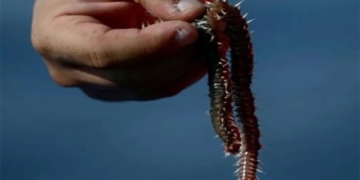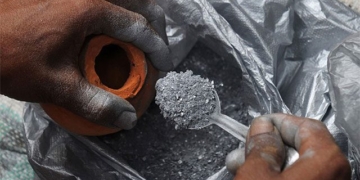The African wild ass is a wild member of the horse family and is believed to be the ancestor of the domestic donkey. They inhabit deserts and arid regions of Africa, such as Eritrea, Ethiopia, and Somalia.
On August 20, a unique foal was born at the Marwell Zoo in Hampshire, England. It has legs resembling those of a zebra, while the rest of its body appears to be like that of a normal donkey.
Zoo keepers were very excited because its true identity is actually that of the African wild ass, listed as one of the most endangered species in the world. Its birth has brought new hope for the continuation of this species.
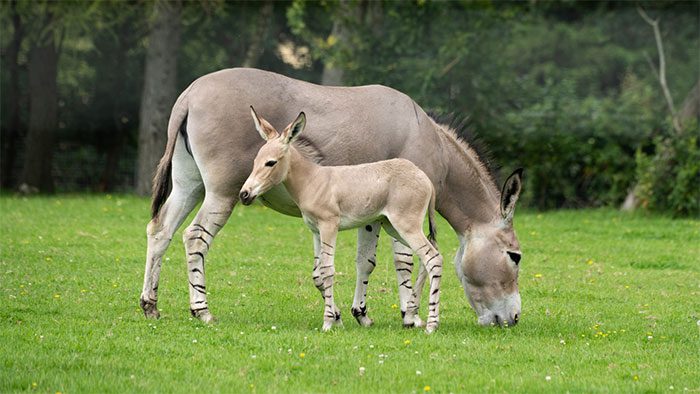
Marwell Zoo in Hampshire, England, welcomes the birth of a male African wild ass, one of the most endangered species in the world. (Photo: Britannica).
Darren Ives, a senior animal keeper at Marwell Zoo, stated that this unnamed foal has skinny legs, soft ears, and like most other equine species, it is able to stand and even run shortly after birth.
It currently resides in a pen with its mother, named Nadifah, while its father, Lars, has been temporarily removed from the enclosure to allow the foal to bond closely with its mother as soon as possible.
In the wild, the relationship between a foal and its mother is crucial for survival. Therefore, the keepers aim to encourage similar bonds in captive animals.
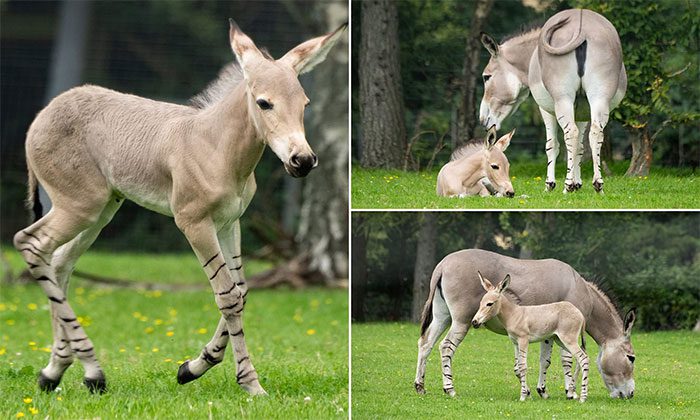
The animal looks like a normal donkey but has legs resembling those of a zebra. The birth of this creature raises hopes that this critically endangered species will continue to survive. (Photo: Britannica).
This is not the first time an African wild ass has been born in captivity. The managers responsible for this species at the zoo are “incredibly proud” of their multi-generational breeding program, which has become increasingly important as hunting and wild populations have historically declined.
African Wild Ass
The African wild ass is listed as critically endangered on the Red List of threatened species by the International Union for Conservation of Nature (IUCN), with fewer than 200 individuals estimated to exist in the wild today.
The African wild ass has a short, fine coat that ranges in color from light gray to brown, with a white belly and legs that have horizontal black stripes, resembling zebras. Many individuals also have a dark stripe along their back and a stripe on their shoulder. Additionally, this species has an upright mane at the back of the neck, a black head, large soft ears with black edges, and a black tail.
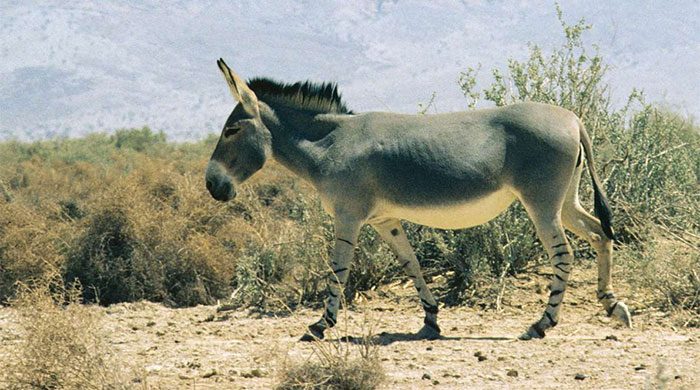
For thousands of years, donkeys have been crucial in advancing human civilizations. This animal has assisted humans in pulling wheeled vehicles, transporting tourists, and moving goods worldwide. (Photo: Thoughtco).
Today, African wild asses live in regions of Eritrea and Ethiopia, with some populations also found in Djibouti, Somalia, Sudan, and Egypt. They tend to inhabit mountainous areas, semi-desert regions, scrub forests, and grasslands with surface water.
They live in groups and have a very flexible social structure, often forming temporary groups of up to 50 individuals, which can be single-sex or mixed. In a mixed population, a mature male will lead the group and control a vast range, typically near a stable water source. Meanwhile, in single-sex groups, females usually form groups with their offspring.
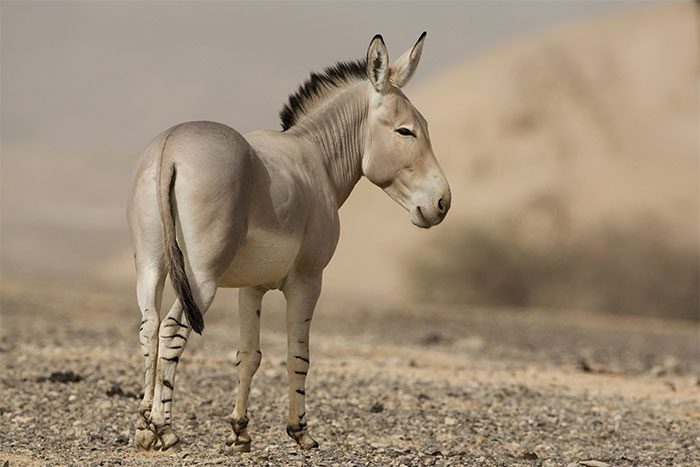
The modern domestic donkey (Equus asinus) was bred from the African wild ass (E. africanus) in northeastern Africa during the pre-dynastic period of Egypt, around 6,000 years ago. (Photo: Foxnews).
Because the areas inhabited by African wild asses are relatively arid, they have excellent drought resistance and can survive for up to four days without water. They seek shaded areas to avoid the hottest parts of the day and are most active in the early morning and late afternoon as the sun sets. As herbivores, they primarily graze on grass, occasionally supplementing their diet with leaves, shrubs, and herbs.
African wild asses practice polygyny, and males in each territory mate with multiple females. They breed during the rainy season when food is abundant to meet the nutritional demands of the females. Wild donkey foals are considered sexually mature by the age of 3-4 years and typically give birth between October and February each year.
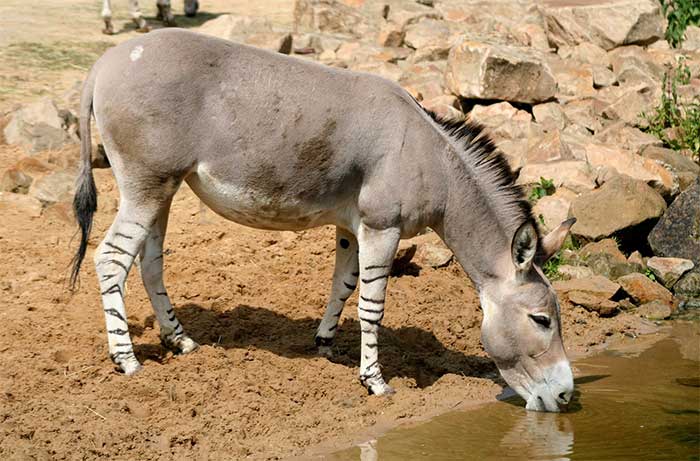
Two subspecies of wild donkeys are believed to have contributed to the development of modern donkeys: Nubian donkey (Equus africanus africanus) and Somali donkey (E. africanus somaliensis). Although these two donkey species still exist today, both are listed as critically endangered on the IUCN Red List. (Photo: Thoughtco).
Why is the African Wild Ass Endangered?
Historically, the African wild ass has been captured in the wild and domesticated for centuries, which has compromised their genetic purity due to breeding with domesticated animals.
Despite being a protected species globally, African wild asses are still hunted in Ethiopia and Somalia for food and medicinal materials.
They also face competition for food and water with human-owned livestock, making their survival even more challenging. Worse, some owners have discovered that they compete for food with livestock and have directly killed them.
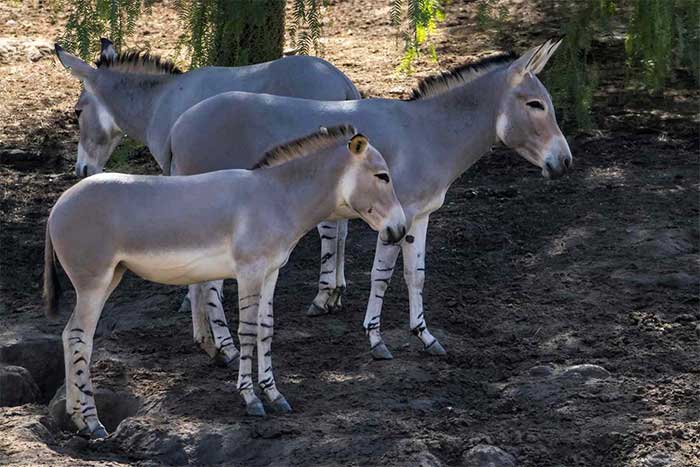
The extreme poverty in Africa has caused many issues, as people struggle to maintain food and clothing, leaving little time to raise awareness about wildlife protection. Consequently, many endangered species in Africa still lack adequate protection. (Photo: Thoughtco).


















































